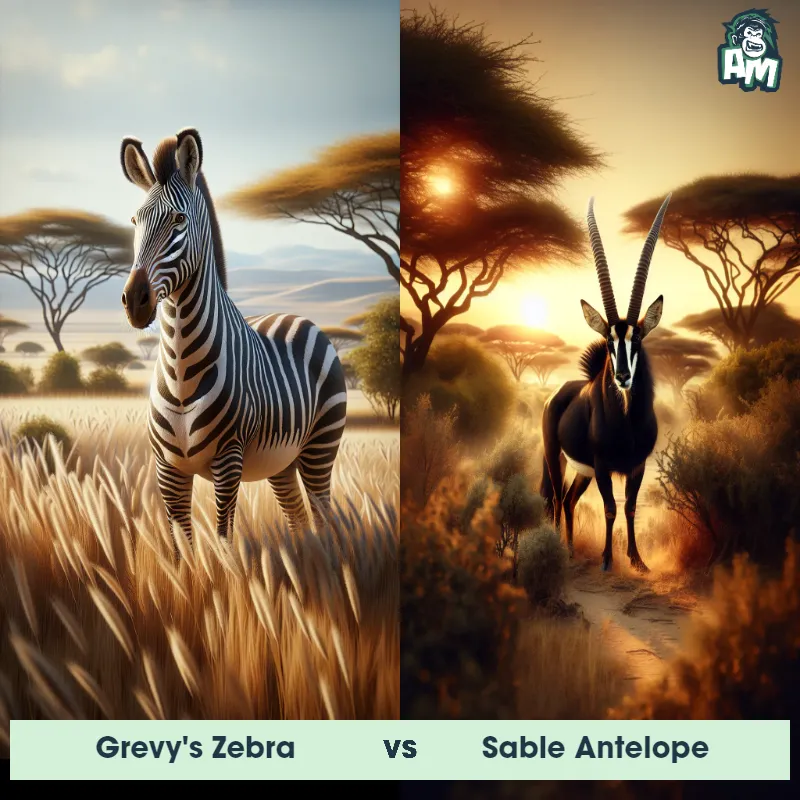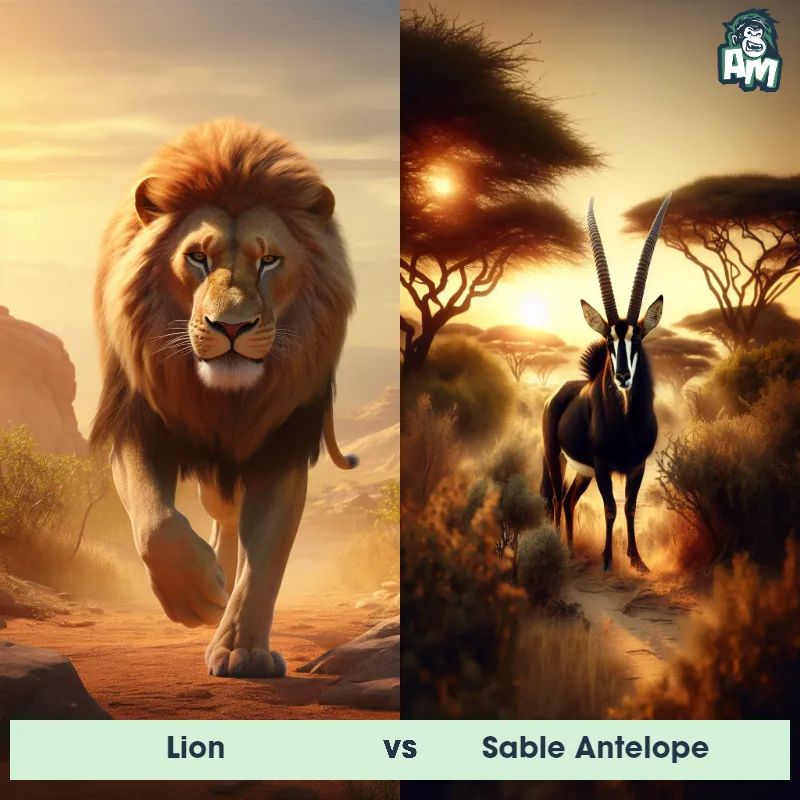The Sable Antelope
The Sable Antelope Hippotragus niger is a large and graceful antelope species found in the savannah regions of Africa. It is known for its distinctive dark brown or black coat with white underbellies. One of the key traits of the Sable Antelope is its impressive curved horns, which can reach up to 1.5 meters in length. Unlike other antelope species, both males and females have horns, although the male's horns are significantly larger and more robust. These majestic creatures often gather in small herds and are known for their agility and powerful leaps, which they use to escape predators.

| Sable Antelope | |
|---|---|
| Size | Up to 140 cm (shoulder height) (1.4 meters) |
| Weight | 270-320 kg (600-700 lbs) |
| Speed | 35mph (56km/h) |
| Key Strength | Horns used for visual displays and intimidation |
| Biggest Weakness | None |
| Scientific Name | Hippotragus niger |
| Family | Bovidae |
| Habitat | Grasslands and savannas |
| Geography | Southern Africa |
| Diet | Herbivorous, primarily consuming grasses and leaves |
| Lifespan | 12 years - 15 years |

The Sable Antelope
The Sable Antelope Hippotragus niger is a large and graceful antelope species found in the savannah regions of Africa. It is known for its distinctive dark brown or black coat with white underbellies. One of the key traits of the Sable Antelope is its impressive curved horns, which can reach up to 1.5 meters in length. Unlike other antelope species, both males and females have horns, although the male's horns are significantly larger and more robust. These majestic creatures often gather in small herds and are known for their agility and powerful leaps, which they use to escape predators.
Fun Fact: One fun fact about the Sable Antelope is that it is considered one of the most handsome antelopes, with its striking contrast of deep sable-brown and bright white markings on its face and underbelly, making it a truly remarkable sight in the African wilderness.
| Sable Antelope | |
|---|---|
| Size | Up to 140 cm (shoulder height) (1.4 meters) |
| Weight | 270-320 kg (600-700 lbs) |
| Speed | 35mph (56km/h) |
| Key Strength | Horns used for visual displays and intimidation |
| Biggest Weakness | None |
| Scientific Name | Hippotragus niger |
| Family | Bovidae |
| Habitat | Grasslands and savannas |
| Geography | Southern Africa |
| Diet | Herbivorous, primarily consuming grasses and leaves |
| Lifespan | 12 years - 15 years |
Sable Antelope Matchups
We use AI to simulate matchups between the Sable Antelope and other animals. Our simulation considers size, strength, and natural predatory behaviors to determine the most likely outcome.

Can't find the Matchup you want?
Create Your Own MatchupSable Antelope: Diet, Predators, Aggression, and Defensive Behaviors
What do Sable Antelope eat?
Sable Antelopes are herbivores, primarily feeding on grasses, leaves, buds, and shrubs. They are selective grazers and prefer nutritious, high-quality vegetation.
Do Sable Antelopes have any predators?
Yes, Sable Antelopes have predators such as lions, leopards, wild dogs, and hyenas. They are most vulnerable to predation when they are young, sick, or injured.
Are Sable Antelopes aggressive?
Sable Antelopes are known to be aggressive when they feel threatened or during mating season. Male sables will often display dominance behavior towards other males to establish hierarchy and territory.
Do Sable Antelopes engage in fights?
During mating season, male Sable Antelopes will engage in fierce battles with other males to compete for females and establish dominance. These fights can be intense and may result in injuries or fatalities.
How do Sable Antelopes defend themselves?
Sable Antelopes have several defense mechanisms to protect themselves from predators. They are fast runners, capable of reaching speeds up to 35 miles per hour, and can jump over obstacles with ease. They also have sharp, curved horns that they use to fend off attackers.
What is the biggest weakness of Sable Antelopes in a fight?
The biggest weakness of Sable Antelopes in a fight is their tendency to become exhausted quickly. Despite their strength and agility, prolonged fights can drain their energy reserves, making them more vulnerable to attacks from predators or other competing males.
Fun Fact: Another interesting fact about the Sable Antelope is that its horns are highly sought after by trophy hunters and poachers, which has contributed to a decline in their population over the years, leading to their classification as a near-threatened species.
Fun Fact: Sable Antelopes have a unique behavior known as "stotting" or "pronking," where they perform spectacular leaps and bounds with all four feet off the ground simultaneously. This behavior is believed to serve as a warning to potential predators and a display of strength and agility.












